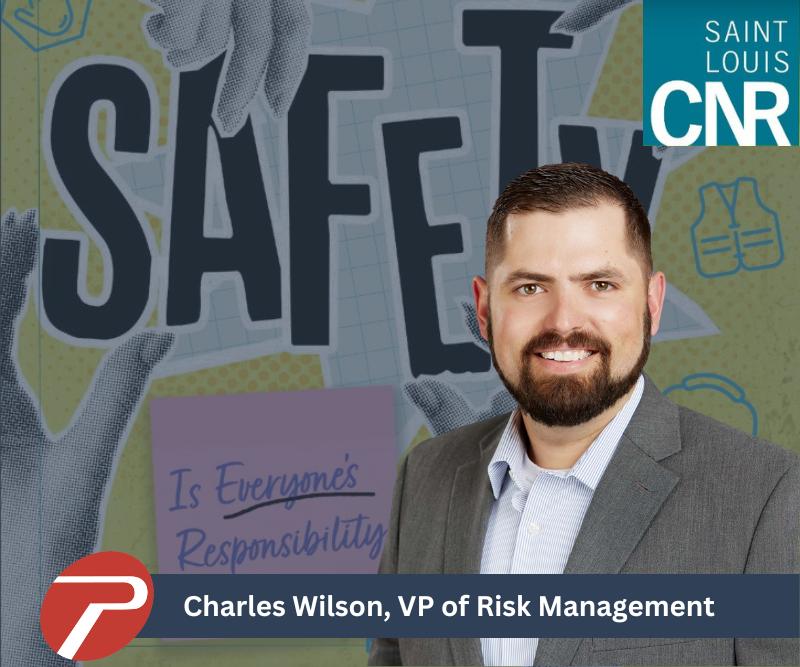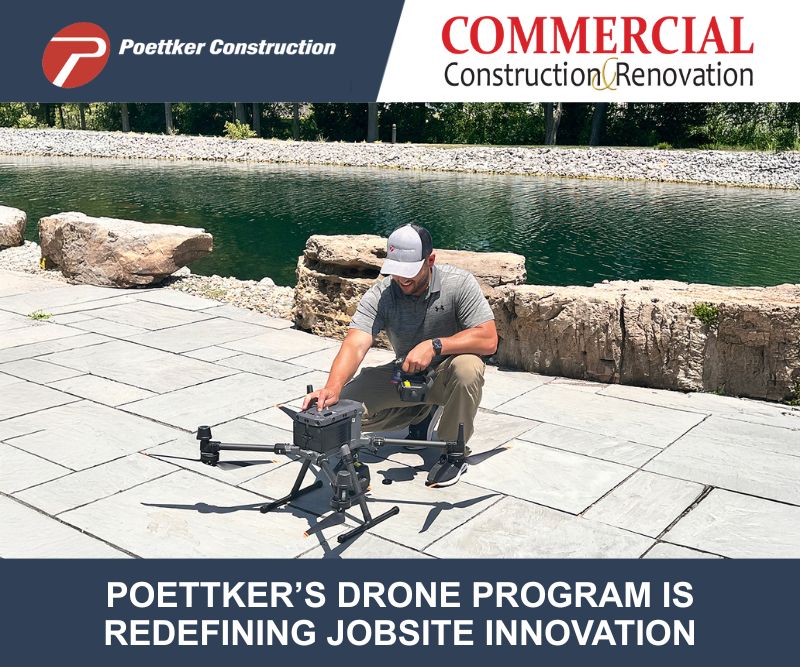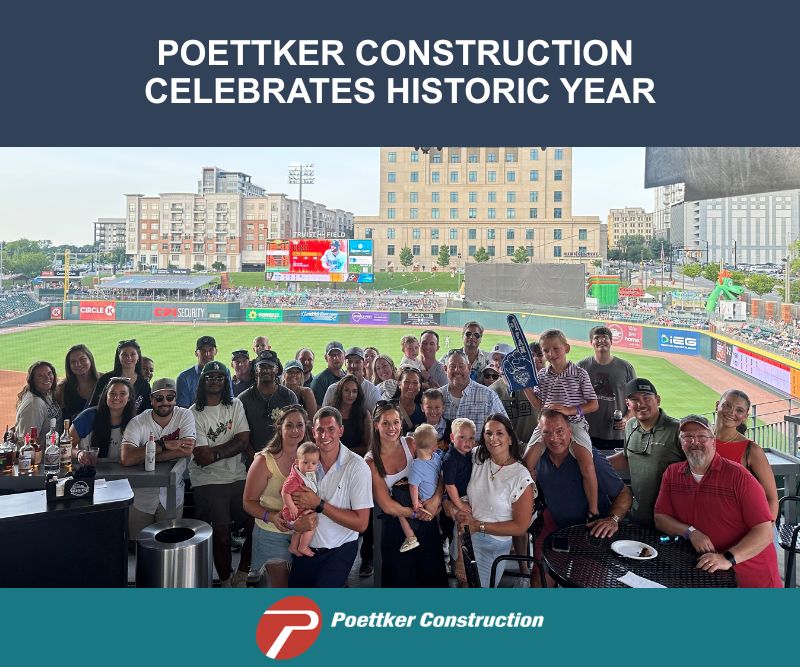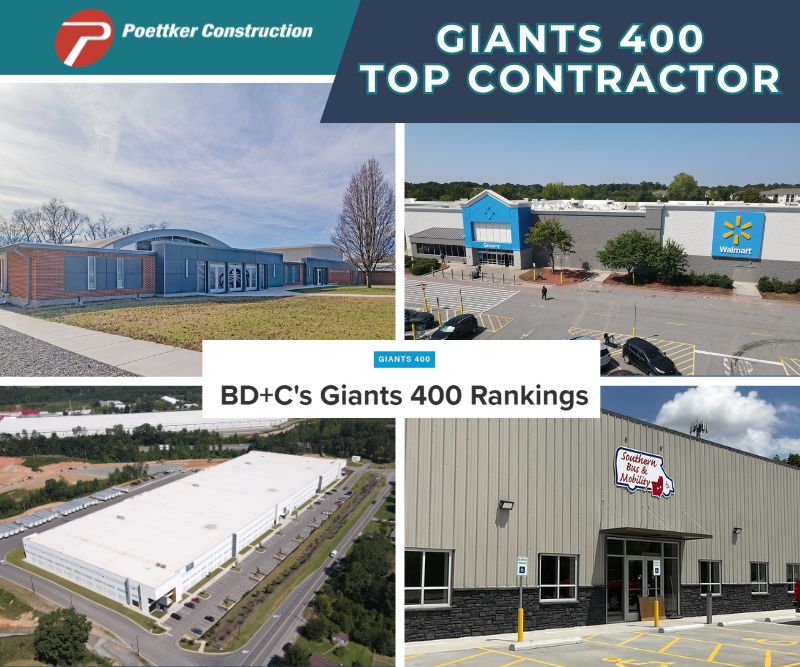
Publication: St. Louis CNR Magazine, October 2023
Companywide ownership of the outcomes of the firm’s safety process – whether they’re good, bad, or indifferent – is the key to success in keeping jobsites safe and projects successful.
Poettker Construction Company espouses this philosophy, as set forth in the book Extreme Ownership by retired U.S. Navy Officers and SEALS Jocko Willink and Leif Babin.
“Safety has to be owned by everyone on your team,” says VP of Risk Management Charlie Wilson, CSP, ASP, STSC. “We try to embrace every planning opportunity connected with risk management, and we stress collaboration so that everyone’s very best ideas rise to the surface…for construction companies to be successful and to build a culture that supports best practices in terms of jobsite safety, every single person has to be all in. Getting past pointing blame and diving down into the details – especially when you’re trying to avoid a specific outcome – is essential.”
One of Poettker’s clients demonstrated this, motivating the company to build what is called a culpability model as a means of improving human performance in the field and in the office. Wilson says this model has proven to be a powerful tool in raising awareness of relevant safety issues, improving the understanding of the causes of adverse incidents and near-incidents and serving as a basis for developing practical guidance and resources.
“It’s something we’re all trying to do,” Wilson says. “The culpability model that we align with the most is that of a just culture…avoiding finding blame and instead finding ways to improve the safety process, improve communication, and find the deep-rooted causes.”
For example, Poettker recently experienced a subcontractor injury. “That’s more challenging, as it involves a third party,” he said. “There was an operator who went out to make an adjustment on a piece of equipment and ended up injuring themself. The automatic question is, ‘What was that operator doing wrong?’ But going further and analyzing that incident through the lens of our culpability model, we asked if there may have been external factors that contributed to the incident, what the subcontractor might be able to do differently or better. We really strive to create a safe space in terms of conversation and create a collaborative environment where we’re constantly seeking feedback from our people in the field… and where an employee can question and offer ideas and improvements to the process. It definitely takes all of us to maintain a culture of safety, and because of this, we’ve seen an uptick in safety milestones for the company like winning the National AGC Construction Safety Excellence Award this past Spring.”
Conducting safety prequalifications with clients and subcontractors is another ingredient in Poettker’s overall safety strategy, according to Wilson. “In our more extensive prequals, we ask our clients and subcontractors to describe the components in their safety policy – including how they orient workers, the length and detail of their project orientations and more. We want to make sure that when they contract with us that the workforce that will build their project is set up for success.”




